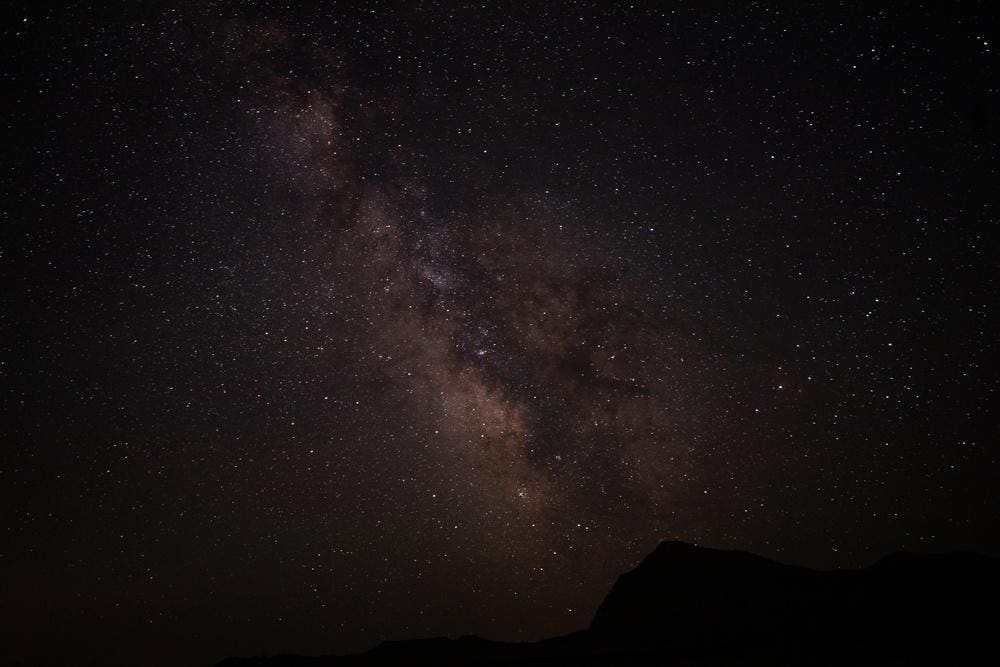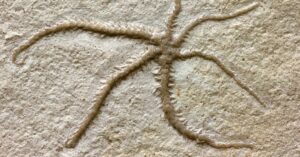Nestled in the northwest corner of Nebraska, Toadstool Geological Park is a geologic treasure trove that offers a unique glimpse into the region’s prehistoric past. The park is best known for its amazing rock formations of giant, narrow pedestals covered in sandstone slabs that look like fly agaric mushrooms and fossil beds. It is part of the Oglala National Grasslands and affectionately referred to as the “moonscape” of the wastelands. Because of its remote location, it’s also a great place to watch the night sky, so if you like to photograph the Milky Way or want to count shooting stars from the back of your car or tent, it’s well worth a visit. Toadstool Geological Park is managed by the US Forest Service, which works to preserve its unique geological and paleontological resources.
Night sky at Toadstool Geological Park, Nebraska
Geology and landscape
The park gets its name from these unusual mushroom-like rock formations formed by wind and water erosion over millions of years. These formations are composed of sandstone, clay, and volcanic ash that have been sculpted into their current forms by the forces of nature. The area dates back to the Oligocene epoch, about 30 million years ago. During this period, the region was a vast floodplain with a warm and humid climate. Over time, volcanic activity deposited layers of ash that, combined with sediments from ancient rivers, created the rock formations scattered throughout the park. It is also full of fossils, some of which can be seen with the naked eye, throughout the park. This landscape is characterized by its vivid, almost unearthly appearance and provides an intriguing destination for both geology and nature lovers.
Landscape at Toadstool Geological Park
Things to do
Toadstool Geological Park is a hot spot for paleontologists because of its rich fossil deposits. The area has yielded numerous fossils, including those of ancient mammals such as three-toed horses, giant tortoises and saber-toothed cats. These fossils provide valuable insight into the fauna that once inhabited the region and contribute to the understanding of prehistoric ecosystems.
Walk through Toadstool Geological Park
The one-mile long Fossil Loop Trail passes some of the park’s most significant fossil sites, and interpretive signs provide in-depth information about them and the geologic history of the area. Although fossil collecting is prohibited to preserve the site’s scientific value, the park offers a fascinating glimpse into the distant past. Other longer trails such as the Bison Trail (3 miles) and The Great Plains Trail (part of a large cross-country trail system that runs through the park) offer a deeper look at the area’s ancient history. The bison trail splits midway on the Fossil Loop Interpretive Trail, following a canyon three miles to the Hudson-Meng Education and Research Center. This research center is open Fridays and Saturdays from 9:00 a.m. to 4:30 p.m. in the summer and is one of the best places to see hundreds of fossilized remains of the Badland’s most famous resident, Bison Antiquus, the extinct ancient bison . Toadstool Geological Park is also home to a reconstructed house that offers a glimpse into the life of an early homesteader on the prairie.
Hudson-Meng Education and Research Center
But perhaps the best way to experience Toadstool is at night. Away from the city lights, the park offers incredibly clear and dark skies, making it an ideal spot for night sky viewing. The park’s unique rock formations provide a stunning foreground for epic astrophotography.
Milky way and night sky at Toadstool Geological Park
Accommodation options
Toadstool is about 20 miles from Crawford Nebraska (closest town) or 50 miles from Hot Springs, South Dakota. Although you can make a day trip here, the park offers primitive camping with basic amenities, including picnic tables and fire rings (no water), and is available on a first-come, first-served basis. The park is open year-round, but the best times to visit are spring and fall when the weather is mild. Other lodging options are available in Crawford from the High Plains Homestead, a homestead and working ranch dating back to 1880, to cabins and campgrounds at Fort Robinson State Park. The museum at Fort Robinson also houses the fossilized remains of prehistoric mammals found in these parts.
Toadstool Geological Park is a quaint hidden gem in the Midwest. Whether you’re a geology buff, a fossil fan, or just love to explore nature, you’ll find plenty to marvel at here. Walking among the unique rock formations and seeing the ancient creatures that once roamed this land gives you a real sense of the history of the land over the millennia.



